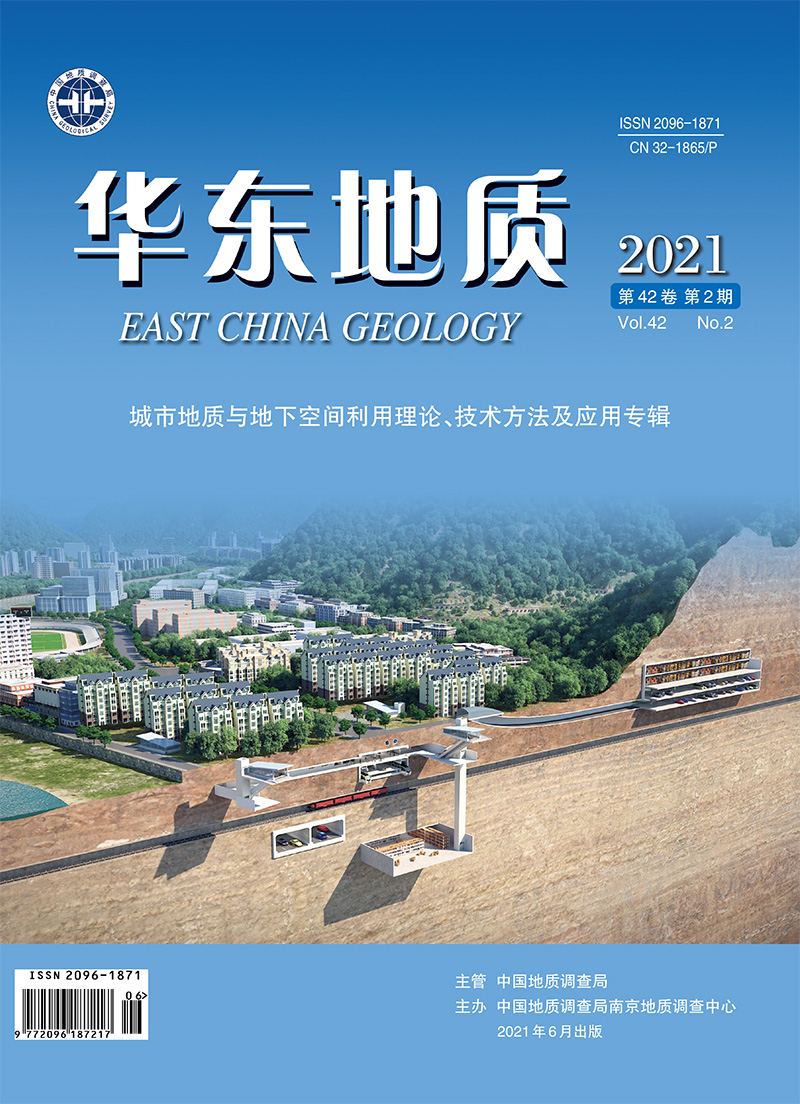|
[1]
|
中华人民共和国国家卫生健康委员会. GB/8537-2018食品安全国家标准饮用天然矿泉水标准[S]. 2019.
Google Scholar
|
|
[2]
|
王娟, 韩薇. 天然矿泉水中微量元素与人体健康[J]. 微量元素与健康研究, 2001, 18(2):77-78.
Google Scholar
|
|
[3]
|
NEGREL P, FOUILLAC C, BRACH M, et al. Occurrence of mineral water springs in the stream channel of the Allier River (Massif Central, France):chemical and Sr isotope constraints[J]. Journal of Hydrology, 1997, 203(1/4):143-153.
Google Scholar
|
|
[4]
|
温红丽. 针对我市矿泉水发展中存在问题的思考及建议[J]. 科技展望, 2014(20):164-164.
Google Scholar
|
|
[5]
|
焦居仁, 史立人, 牛崇桓, 等. 我国东中西部水土保持发展战略[J]. 中国水土保持科学, 2006, 4(5):1-6.
Google Scholar
|
|
[6]
|
薛怀民, 董树文. 大别山超高压变质杂岩的折返[J]. 华东地质, 1999, 20(1):23-24.
Google Scholar
|
|
[7]
|
杨章贤. 安徽省饮用天然矿泉水类型及分布特征研究[J]. 地下水, 2018, 40(5):28-31.
Google Scholar
|
|
[8]
|
阎如璲, 孙庭芳, 贺平. 安徽省饮用天然矿泉水资源的基本特征与形成规律[J]. 安徽地质, 1996, 6(3):63-76.
Google Scholar
|
|
[9]
|
李肖雪, 吴立, 杨钊, 等. 安徽省地热温泉资源分布与特征[J]. 安徽师范大学学报:自然科学版, 2020, 43(4):364-370.
Google Scholar
|
|
[10]
|
薛怀民, 董树文. 南大别山超高压岩区变质作用的P-T-t研究——兼论花岗片麻岩[J]. 华东地质, 2000, 21(4):235-243.
Google Scholar
|
|
[11]
|
安徽省地质矿产局. 安徽省区域地质志[M]. 北京:地质出版社, 1987.
Google Scholar
|
|
[12]
|
SHAN Z, WEI W. The Uncertainty Assessment of Arsenic Content in Drinking Water by Hydride Generation Atomic Fluorescence Spectrometry[J]. Journal of Environmental Hygiene, 2012, 2(4):182-186.
Google Scholar
|
|
[13]
|
吴海权, 李琴, 范董伟. 安徽大别山响肠超单元的岩石学和地球化学特征及成因探讨[J]. 宿州学院学报, 2019, 34(9):66-72
Google Scholar
|
|
[14]
|
SHUTONG X, LAILI J, YICAN L, et al. Tectonic Framework and Evolution of the Dabie Mountains in Anhui, Eastern China[J]. Acta Geologica Sinica English Edition, 1992, 66(2):221-238.
Google Scholar
|
|
[15]
|
中华人民共和国卫生部. GB/T 5750.6/22.2-2006生活饮用水标准检验方法[S]. 2006.
Google Scholar
|
|
[16]
|
中华人民共和国地质矿产部.DZ/T 0064.51-1993地下水质检验方法[S]. 1993.
Google Scholar
|
|
[17]
|
中华人民共和国地质矿产部.DZ/T 0064.49-1993地下水质检验方法[S]. 1993.
Google Scholar
|
|
[18]
|
中华人民共和国地质矿产部.DZ/T 0064.80-1993地下水质检验方法[S]. 1993.
Google Scholar
|
|
[19]
|
中华人民共和国地质矿产部.DZ/T 0064.9-1993地下水质检验方法[S]. 1993.
Google Scholar
|
|
[20]
|
中华人民共和国地质矿产部.DZ/T 0184.19-1997水中氢同位素锌还原法测定[S]. 1993.
Google Scholar
|
|
[21]
|
中华人民共和国地质矿产部.DZ/T 0184.21-1997天然水中氧同位素二氧化碳-水平衡法测定[S]. 1997.
Google Scholar
|
|
[22]
|
谭梦如. 云南西双版纳地区部分温泉水化学和同位素特征及成因研究[D]. 北京:中国地质大学(北京), 2018:1-68.
Google Scholar
|
|
[23]
|
王正文, 张景润等温泉水浴治疗6种顽固性皮肤病193例的效果观察[J]. 云南医药, 2002, 23(3):218-220.
Google Scholar
|
|
[24]
|
WANG X, ZHOU X, ZHAO J, et al. Hydrochemical evolution and reaction simulation of travertine deposition of the Lianchangping hot springs in Yunnan, China[J]. Quaternary International, 2015, 374:62-75.
Google Scholar
|
|
[25]
|
YURTSEVER Y. Worldwide survey of stable isotopes in precipitation[J]. Rep. Sect. Isotope Hydrol, IAEA, 1975:40.
Google Scholar
|
|
[26]
|
CHRISTOPHE R, BERTRAND M, JEANPIERRE G, et al. Stable isotope study of rainfall, river drainage and hot springs of the kerguelen archipelago, SW Indian Ocean[J]. Geothermics, 2020(83):101726.
Google Scholar
|
|
[27]
|
周训, 金晓媚, 梁四海, 等. 地下水科学专论[M]. 北京:地质出版社, 2017.
Google Scholar
|
|
[28]
|
柳鉴容, 宋献方, 袁国富, 等. 中国东部季风区大气降水δ18O的特征及水汽来源[J]. 科学通报, 2009, 54(22):3521-3531.
Google Scholar
|
|
[29]
|
郑淑惠, 侯发高, 倪葆龄. 我国大气降水的氢氧稳定同位素研究[J]. 科学通报, 1983, 28(13):801-806.
Google Scholar
|
|
[30]
|
李延河. 同位素示踪技术在地质研究中的某些应用[J]. 地学前缘, 1998(2):106-112.
Google Scholar
|
|
[31]
|
苏贵芬, 李方根, 韩晓南. 安徽皖南地区构造盆地及深大断裂地热潜力研究[J]. 中外能源, 2018, 23(7):15-24.
Google Scholar
|






 DownLoad:
DownLoad: